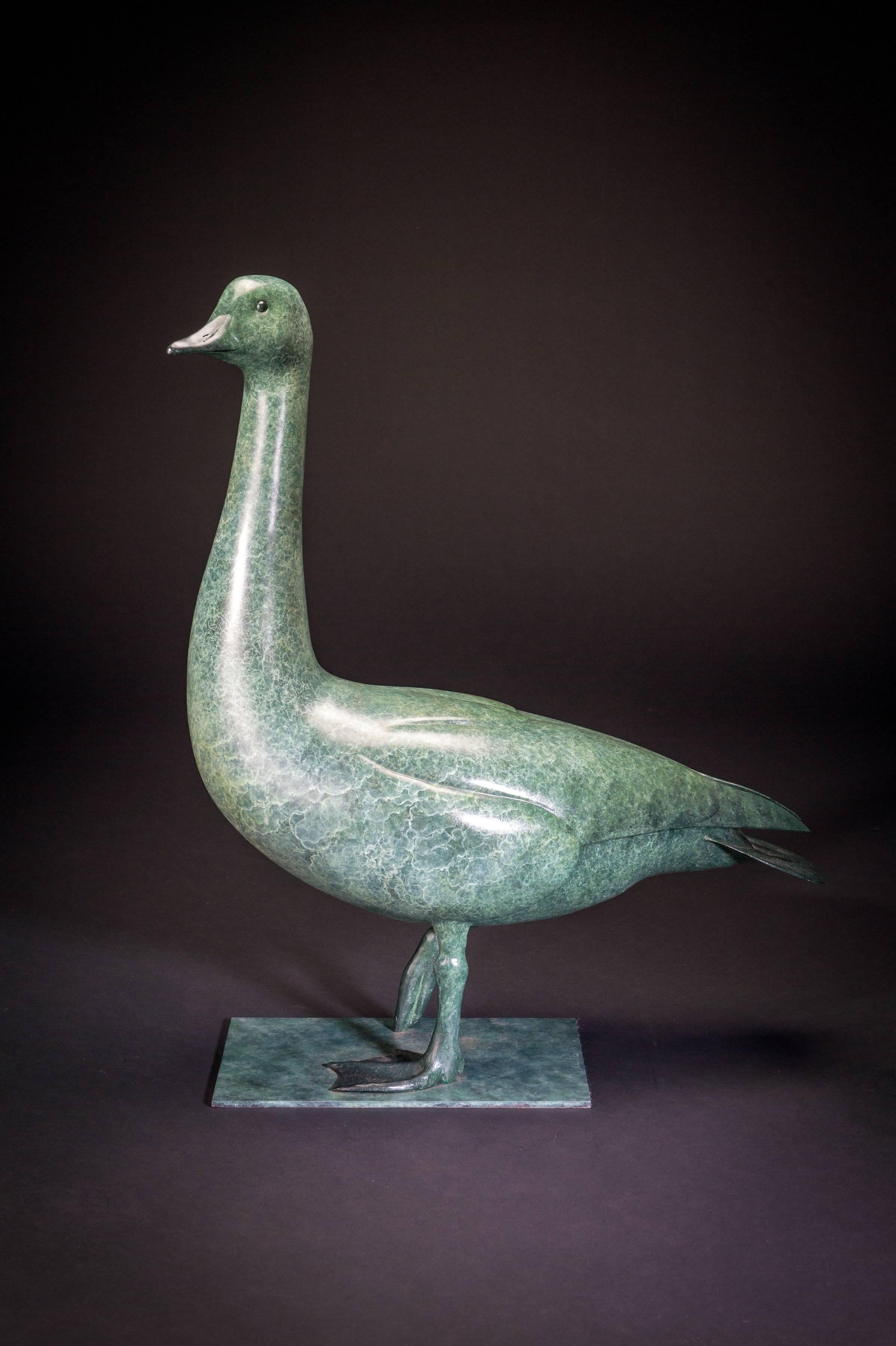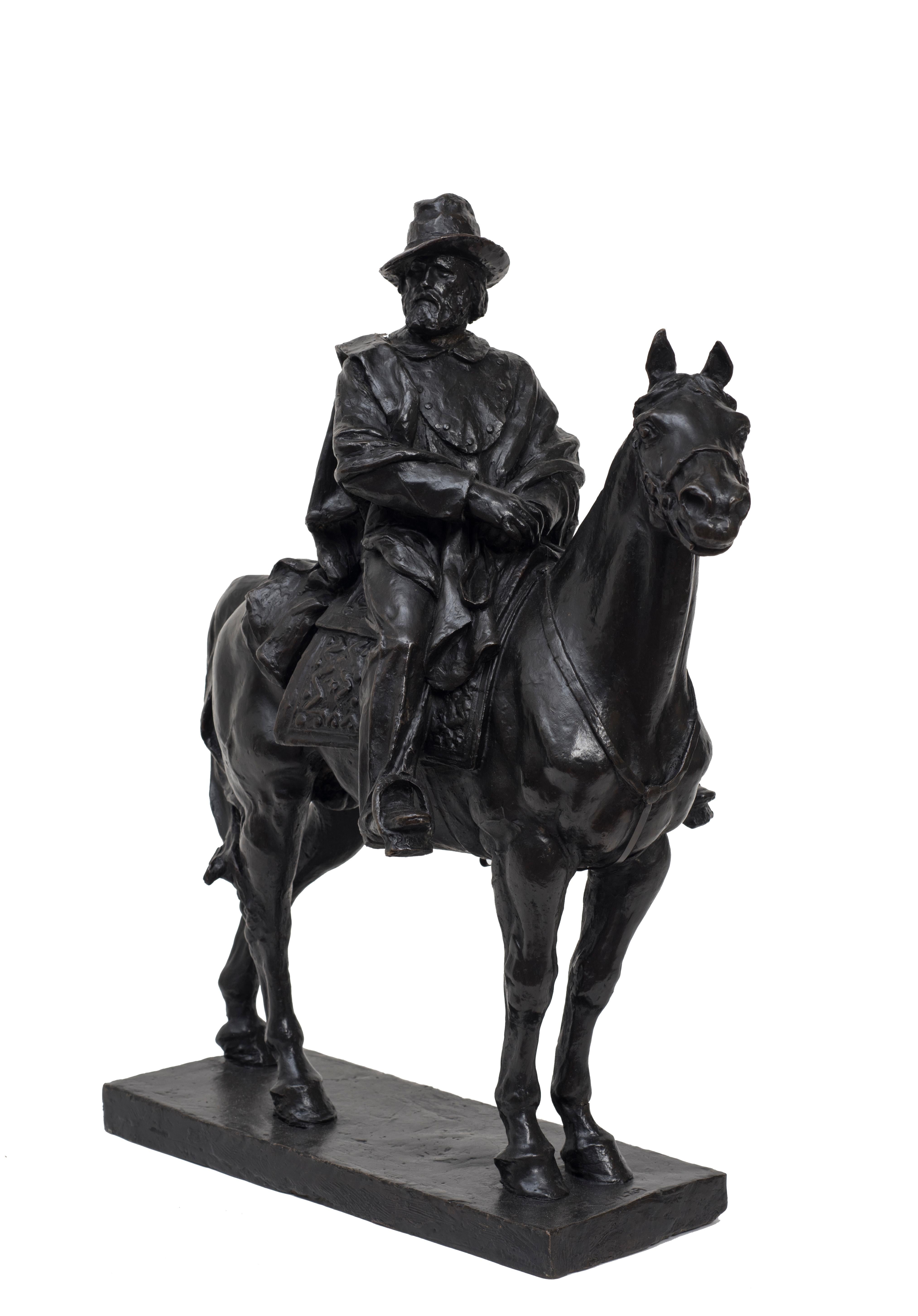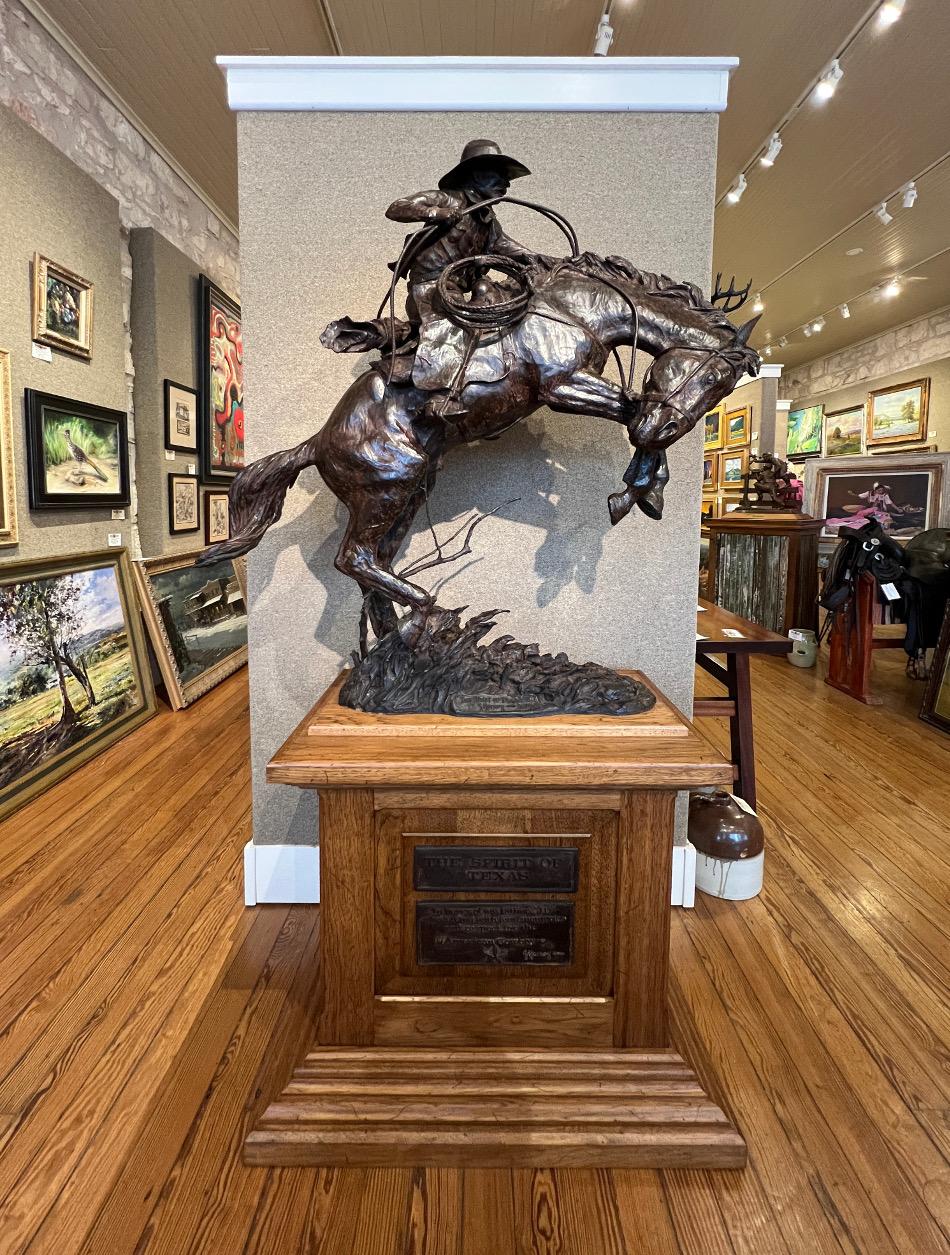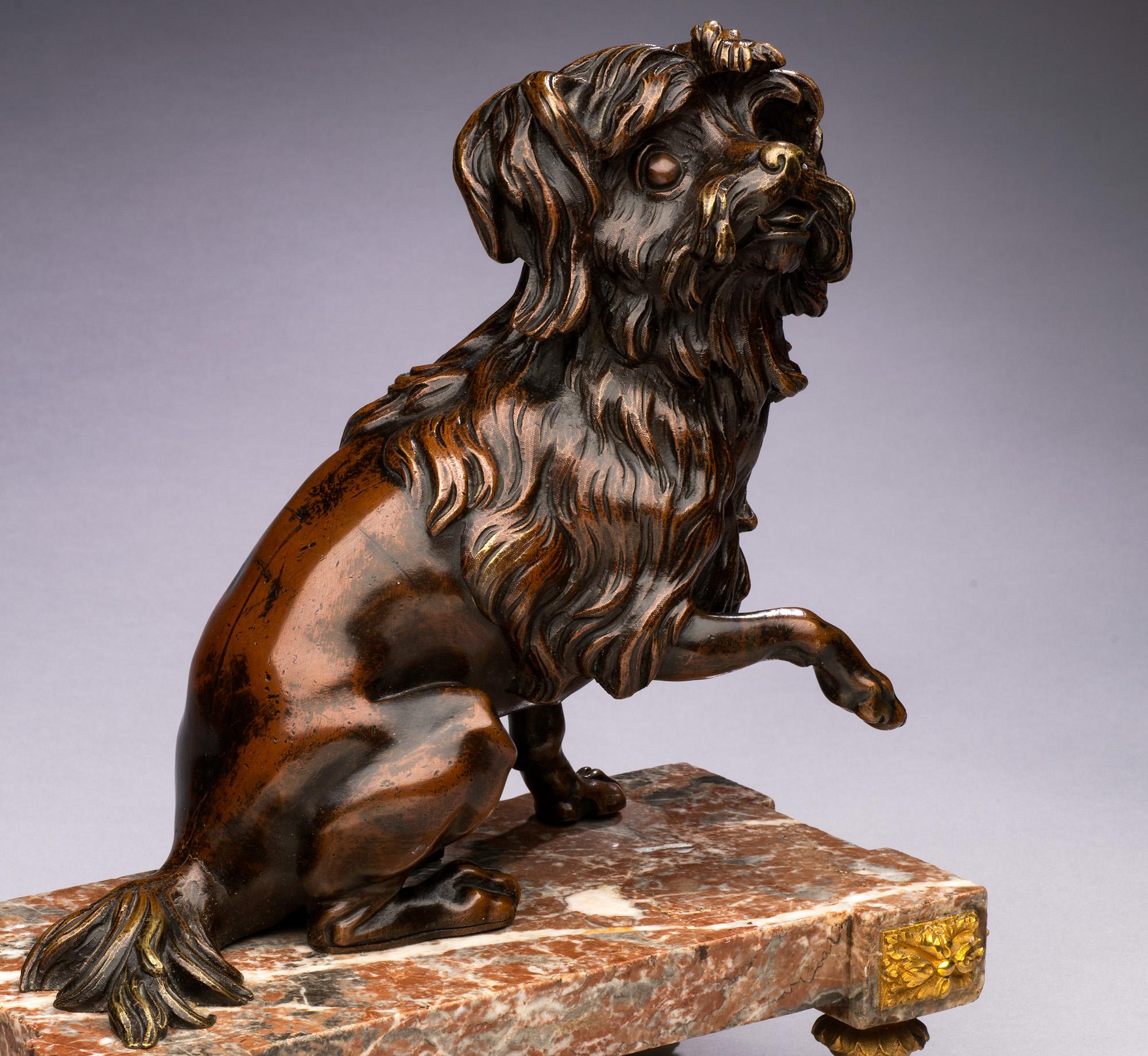Items Similar to ANCIENT BRONZE HEAD OF AN ELEPHANT, ROMAN EMPIRE 2ND CENTURY AD
Want more images or videos?
Request additional images or videos from the seller
1 of 5
UnknownANCIENT BRONZE HEAD OF AN ELEPHANT, ROMAN EMPIRE 2ND CENTURY AD2nd Century A.D.
2nd Century A.D.
About the Item
This beautiful cast bronze elephant head is a protome, which in ancient art was a decorative element consisting of a head - sometimes with part of the bust - of a human, animal, or fantastical figure. The present artwork was in fact probably part of a furniture piece, such as a couch or chair. Its features are extremely realistic, and resemble the large elephant head couch attachment once in the James Loeb collection, donated to the Staatliche Antikensammlungen in Munich, acc. no. 50.
In classical times, animals often carried supernatural powers, or conveyed certain characters in the collective imagination. Elephants were symbols of strength, power and ferocity. They were extensively depicted in Roman households, as a representation of the supremacy of the Roman Empire.
Besides exhibiting the skillfulness of ancient craftsmen, this sculpture is a testament to one of the largest ancient animal sculpture collections in modern times, once owned by Leo Mildenberg.
Leo Mildenberg was the Vice President of the oldest bank in Switzerland, the Bank Leu, in Zurich, founded in 1755. He was also responsible for the exhibition and cataloguing of ancient coins, owned by the Bank. Dr. Mildenberg developed an interest in ancient history, with a particular appreciation for small, precisely carved bronze artworks.
This small but powerful bronze sculpture, was displayed in a temporary exhibition at the Cleveland Museum in 1981, titled “Animals in Ancient Art from the Leo Mildenberg Collection”, and the press release stated: “Leo Mildenberg, a director of the Bank Leu in Zurich, Switzerland, and one of the world’s foremost authorities on ancient coins, has over the past thirty years assembled an extraordinary collection of animal figures from ancient Near Eastern, Egyptian and classical cultures.”
PROVENANCE
Leo Mildenberg (1913-2001) collection, Zurich
English Private Collection
Private Collection, Florida, USA
EXHIBITIONS
Cleveland Museum, Animals in Ancient Art from Leo Mildenberg Collection, 21st October-29th November 1981
PUBLICATIONS
A.S. Walker, “Animals in Ancient Art from the Leo Milden- berg Collection”, Part III, Mainz am Rhein, 1996, no. 173
P.E. Mottahedeh, “Out of Noah’s Ark, Animals in Ancient Art from the Leo Mildenberg Collection”, Bible Lands Museum, Jerusalem, 1997, no. 98
- Creation Year:2nd Century A.D.
- Dimensions:Height: 0.91 in (2.3 cm)Width: 1.97 in (5 cm)
- Medium:
- Period:
- Condition:
- Gallery Location:Milan, IT
- Reference Number:
About the Seller
5.0
Vetted Seller
These experienced sellers undergo a comprehensive evaluation by our team of in-house experts.
Established in 2020
1stDibs seller since 2021
6 sales on 1stDibs
- ShippingRetrieving quote...Ships From: London, United Kingdom
- Return PolicyA return for this item may be initiated within 14 days of delivery.
More From This SellerView All
- ANCIENT RARE BRONZE FIGURE OF DIONYSOS (BACCHUS) ROMAN EMPIRE 1ST CENTURY ADLocated in Milan, ITThis bronze sculpture is an exquisitely detailed representation of the god Dionysos, whose cult was one of the most popular in ancient times. Here, the god is nude, with a mantle that gently lies on his right leg. He is holding a bunch of grapes with his left hand, and a rhyton (drinking horn) with the right. The god is youthful and joyfully gazes forwards, with a crown of ivy leaves set upon his long flowing hair. These features clearly resemble those of the life-size Roman marble sculpture of Dionysos exhibited at the British Museum, acc. no. 1861,0725.2 . This statuette was probably part of a larger composition and used as a decorative element applied to a piece of furniture. Its finely wrought details, as well as the attractive olive-green patina led to its inclusion in the collection of the Fitchburg Art Museum for thirty years. PROVENANCE English Private Collection (Sotheby’s, London 17-18 July 1985, Lot 204) Royal Athena...Category
15th Century and Earlier Figurative Sculptures
MaterialsBronze
- ANCIENT ROMAN BRONZE FIGURE OF WINGED EROS RIDING A DOLPHIN, 2ND CENTURY ADLocated in Milan, ITBronze figure of a young Eros, caught in the pose of riding a dolphin. Attractive green patina, some fingers and right foot are broken. Separately worked left wing is missing. Right ...Category
15th Century and Earlier Figurative Sculptures
MaterialsBronze
- Gallo-Roman Bronze Applique Bust Figure of a Man, 3rd/4th Century A.D.Located in Milan, ITPROVENANCE Herbert A. Cahn (1915-2002), Kunst der Antike, Basel, 1988 Private Collection, ParisCategory
15th Century and Earlier Figurative Sculptures
MaterialsBronze
- ITALIAN BRONZE FIGURE OF YOUNG CHERUB ON PORPHYRY BASE - ATT. TO ROCCATAGLIATALocated in Milan, ITResting on a circular Egyptian porphyry base, this fascinating bronze figure of a young cherub is a striking example of the Venetian workmanship of the 16th Century. With the head tu...Category
16th Century Figurative Sculptures
MaterialsBronze
- 16th Century Venetian bronze sculpture of a Young Man in ArmourLocated in Milan, IT16th Century Venetian bronze sculpture of a Young Man in Armour attributed to the Florentine artist Andrea di Alessandri, called Il Bresciano (Fl...Category
16th Century Figurative Sculptures
MaterialsBronze
- ANCIENT ROMAN BRONZE SCULPTURE FIGURE OF A ROMPING DOGLocated in Milan, IT"Roman Bronze Figure Of A Romping Dog" Roman Empire, circa 1st Century B.C.- 1st Century A.D. Bronze width 7 cm width 2 3/4 in Provenance: Leo Mildenberg (1913-2001) Private Collection, Zurich, prior to 1986 American Private Collection, acquired in 1991 Literature: A.P. Kozloff, et al., More Animals in Ancient Art...Category
15th Century and Earlier Figurative Sculptures
MaterialsBronze
You May Also Like
- Show of InterestBy Brad RudeLocated in Denver, COArtist Brad Rude was born in Montana and has lived in Walla Walla, Washington most of his life. His journeys through his grandfather's folk art studio left...Category
2010s American Modern Figurative Sculptures
MaterialsEnamel, Bronze
- Contemporary Bronze Green Bird Wildlife Garden or interior Sculpture 'Goose'By Richard Smith b.1955Located in Shrewsbury, Shropshire'Goose' is a stunning sculpture full of character. As a gamekeeper, Richard Smith understands and loves the animal he sculpts - he lives and breathes nature! Richard Smith has gained an international reputation for his works of art, he has exhibited at prestigious galleries such as the Tryon Gallery and W. H. Pattersons in London, The Sportsman’s Edge Gallery in New York, The Call of Africa in Fort Lauderdale, Florida and the Everard Reed Gallery in Johannesburg, South Africa. Richard has exhibited his paintings at the Leigh Yawkey Woodson Museum in the USA, the Natural History Museum and Tring Museum in Britain. He has sold at all the major auctions houses in London, such as Christie’s, Sotheby’s, Bonhams and Phillips. In 2013 Callaghans of Shrewsbury...Category
21st Century and Contemporary Contemporary Still-life Sculptures
MaterialsBronze
- ConfuciusBy Wu WeishanLocated in Roma, ITThis artwork is equipped with the special box which was made for the exhibition An International Touring Exhibition of the Art of Wu Weishan·Special Exhibition. Exhibition : Sculpti...Category
21st Century and Contemporary Contemporary Figurative Sculptures
MaterialsBronze
- Garibaldi Riding a Horse - Original Bronze Sculpture by Carlo RivaltaBy Carlo RivaltaLocated in Roma, ITGaribaldi Riding A Horse is an original bronze sculpture realized by Carlo Rivalta. Signed by the artist. Beautiful and important sculpture representing the most famous Italian Hero...Category
Early 20th Century Figurative Sculptures
MaterialsBronze
- " THE SPIRIT OF TEXAS " HUGE, 81" TALL BRONZE BUCKING BRONCO COWBOY WESTERNBy G. HarveyLocated in San Antonio, TXG. Harvey (Gerald Harvey Jones) (1933-2017) San Antonio, Austin, and Fredericksburg Artist Image Size: 81 Inches Tall Medium: Bronze Sculpture Dated 2006 "The Spirit Of Texas" Bucking Bronco & Rider They are very scarce. I only know about 2 others that have even come up for sale in the last 10 years or so. Please not the dedication on the wooden base of the sculpture. There is one on Gerald Harvey Jones (G. Harvey) tombstone in the Texas State Cemetery in Austin, Texas. Western, Cowboy, Horse, Bronc, Bronco Riata, Rodeo G. Harvey (Gerald Harvey Jones) (1933-2017) Known for paintings closely linked in mood and subject matter to Edouard Cortes [1882-1962], G Harvey creates romanticized street scenes of turn of the century towns in America. Rain slick streets reflect urban lights, and the weather is obviously cold. He grew up in the rugged hills north of San Antonio, Texas from where herds of longhorn cattle were once driven up dusty trails to the Kansas railheads. His grandfather was a trail boss at 18 and helped create an American legend for his grandson. So the American West is not only the artist's inspiration but his birthright. Harvey's early interest in sketching and drawing slowly evolved into a passion for painting in oils. After graduating cum laude from North Texas State University, Harvey took a position with the University of Texas in Austin, but he soon realized that weekends and nights at the easel did not satisfy his love of painting. He abandoned the security of a full-time job in 1963 and threw his total energy into a fine art career. Harvey paints the spirit of America from its western hills and prairies to the commerce of its great cities. His original paintings and bronze sculptures are in the collections of major corporations, prestigious museums, the United States government, American presidents, governors, foreign leader and captains of industry. The Smithsonian Institution chose Harvey to paint The Smithsonian Dream, commemorating its 150th Anniversary. The Christmas Pageant of Peace commissioned Harvey to create a painting celebrating this national event. He has been the recipient of innumerable awards and the subject of three books. G. Harvey lived in Fredericksburg, Texas, with his wife Pat in a 150-year-old stone home built by German settlers. His studio and residence are nestled within the Historic District of Fredericksburg. It is obligation of fine artists to present us with more than pretty pictures. They must also make us feel. Among the western painters of today, there is none more capable of accomplishing this than G. Harvey. In his paintings, the viewer into only sees the physical elements of his subject, but also senses the mood that surrounds them. It is a remarkable aspect of fine art, which few artists are able to master. Gerald Harvey Jones was born in San Antonio, Texas, in 1933. His grandfather was a cowboy during the trail-driving era when legends grew up along the dusty trails north from Texas. Family stories of wild cattle and tough men were absorbed by a wide-eyed boy and became the genesis of G. Harvey's art. A graduate in fine arts at North Texas State University, Harvey taught full-time and painted nights and weekends for several years. It was through painting that he found his greatest satisfaction, and his native central Texas hill country provided the inspiration for most of his earliest work. With the development of his talent and the growth of his following, Harvey began to expand his artistic horizons. He left teaching and concentrated on a career in fine art. He sought the essence that is Texas and found it not only along the banks of the Guadalupe, but in cow camps west of the Pecos, and in the shadows of tall buildings in big Texas cities. The streets of Dallas once echoed with the sound of horse hooves and the jingle of spurs. Historic photographs reveal what it looked like, but only an artist like Harvey can enable a viewer to experience the mood and flavor or the time. Contemporary western art has too often centered on the literal representations from its roots in illustrations. Artists like G. Harvey take us a step further, to the subjective impressions that are unique to each great talent and which constitutes something special and basic to fine art expression. Harvey was a soft-spoken and unassuming man who cared deeply about what he painted without becoming maudlin or melodramatic. We sense there is more in each Harvey painting than just that which is confined to the canvas. Resources include: The American West: Legendary Artists of the Frontier, Dr. Rick Stewart, Hawthorne Publishing Company, 1986 Artist G. Harvey grew up in the rugged hills north of San Antonio, Texas from where herds of longhorn cattle were once driven up dusty trails to the Kansas railheads. His grandfather was a trail boss at 18 and helped create an American legend. The American West is not only the artist's inspiration but his birthright. Harvey's early interest in sketching and drawing slowly evolved into a passion for painting in oils. After graduation cum laude from North Texas State University, Harvey took a position with the University of Texas in Austin, but he soon realized that weekends and nights at the easel did not satisfy his love of painting. He abandoned the security of a full-time job in 1963 and threw his total energy into a fine art career. Two years as a struggling artist followed, but 1965 brought acclaim for the artist's first prestigious show, The Grand National exhibition in New York, and the American Artists' Professional League presented him with their New Master's Award. President Lyndon Johnson discovered his fellow Texan's talent, became a Harvey collector and introduced John Connally to the artist's work. Connally was enthusiastic about Harvey's art, and, on one occasion, he presented a G. Harvey original to each governor of Mexico's four northern states. Harvey paints the spirit of America from its western hills and prairies to the commerce of its great cities. His original paintings and bronze sculptures are in the collections of major corporations, prestigious museums, the United States government, American presidents, governors, foreign leader and captains of industry. The Smithsonian Institution chose Harvey to paint The Smithsonian Dream commemorating its 150th Anniversary. The Christmas Pageant of Peace commissioned Harvey to create a painting celebrating this national event. He has been the recipient of innumerable awards and the subject of three books. Through his art, our history lives. Gerald Harvey Jones, better known as G. Harvey, grew up in the Texas Hill Country listening to his father and grandfather tell stories about ranch life, frontier days in Texas, and driving cattle across the Red River. Early in his career, he began to draw inspiration from that collective memory for paintings that would eventually earn him the reputation as one of America's most recognized and successful artists. His art is rooted in the scenic beauty of the land he grew up in and the staunch independence of the people who live there. He says, "My paintings have never been literal representations. They are part first-hand experience, and part dreams generated by those early stories I heard. They are a product of every place I have been, everything I have ever seen and heard." G. Harvey graduated from North Texas State University. He taught in Austin, but continued to study art in his spare time, eventually devoting full time to his painting. The year 1965 was a turning point when he won the prestigious New Masters Award in the American Artist Professional League Grand National Exhibition in New York. It is often said that in viewing a work of art, one is granted a unique look into the thoughts and expressions of values that give meaning to the artist work. Nowhere does this ring truer than the art of G. Harvey. Though Harvey has had nearly two decades of sell-out shows, an outstanding honor came with a series of one-man shows in Washington, D.C. in 1991. The first was at the National Archives featuring his paintings of the Civil War era, then a selection of paintings of notable Washington landmarks was exhibited at the Treasury Department, culminating in a one-man show of 35 paintings at the Smithsonian Institution during their exhibition of The All-American Horse. His work was featured in Gilcrease Museum exhibitions from 1992-1997. In 1987 his alma matter...Category
Early 2000s Impressionist Figurative Sculptures
MaterialsBronze
- Antique 19th century Bronze Dog Portrait of a Maltese on a Marble BaseLocated in SANTA FE, NMAntique Bronze Dog Portrait of a Maltese on a Marble Base French 19th century 1/2 x 8 x 5 1/2 inches The chiseled bronze has a nuanced, rich brown patina depicting a Maltese in the round, seated on a quadrangular marble base decorated with very fine gilt bronze flowers and fluted feet. Napoleon III, Louis XVI style. Based on a model by Jacques Caffieri for the Prince de Condé in 1773. (More images to be added.) Executed during the nineteenth century, this figure is fully in line with the eclectic taste of the reign of Napoleon III. Indeed, the Empress Eugenie brought the Louis XVI style up to date in her castle of Compiègne. Jacques Caffieri is one of the most famous bronze smiths of the eighteenth century. In 1715 he was admitted as a master caster and chiseler, and worked almost exclusively for the crown castles...Category
19th Century Rococo Figurative Sculptures
MaterialsMarble, Bronze
Recently Viewed
View AllMore Ways To Browse
Ancient Sculpture
Ancient Sculptures
2nd Century
Bronze Head
Century Ad
Ancient Bronze
Antique Head Sculpture
Antique Sculpture Head
Ancient Figure
Ancient Roman Furniture
Ancient Head
Small Head Sculpture
Antique Roman Sculpture
Roman Head
Large Elephant
Antique Director Chair
Antique Directors Chair
Antique Directors Chairs




